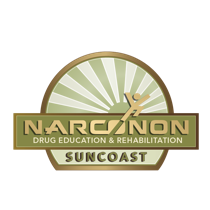Methadone: Profits Made At the Expense of Addicts
#2 in a 3 part series on:
Methadone: A "safe" replacement for heroin?

The use of Methadone has been employed for years as a substitute drug for heroin and painkiller addiction. Heroin addiction has reached epidemic proportions in the United States, driving up the demand for replacement drug “therapy.” Methadone treatment is the mainstream method of dealing with opiate addiction because it’s an “easy” way out. A person does not have to check himself into a rehabilitation program and confront his demons. All he has to do is go to the clinic each day for his dose. While some believe Methadone maintenance programs are the only way to prevent addicts from using mass quantities of illegally purchased opiates, there seems to be a financial incentive in keeping the public addicted to a highly controlled, money-generating substance.
Methadone was first synthesized in the 1930’s by German scientists who were looking for an analgesic medication that would handle morphine addiction. After World War II Methadone made its way to the United States where it was widely prescribed to treat various painful conditions. During this time it was also found that methadone was quite “useful” in treating opiate addicts.
A Financial Incentive
In the 1960’s there was a huge boom in heroin use among Vietnam War veterans returning home from combat. Since Methadone had seemed to be capable of reducing opiate cravings while fending off withdrawal symptoms its mainstream use was employed as a “maintenance” or “replacement” drug to keep people off of heroin (http://www.cesar.umd.edu/cesar/drugs/methadone.asp). It also served as a steady stream of revenue for clinic owners and the local government. Non-hospital based residential Methadone treatment programs costs average around $76.13 per day per person. Visiting a Methadone clinic on an out-patient basis costs an average of $17.78 per day per person (http://www.methadonecenters.com/typical-methadone-clinic-cost/). In the U.S. there are an estimated 500,000 addicts who attend Methadone treatment clinics on a regular basis (http://www.crchealth.com/addiction/heroin-addiction-treatment/heroin-detox/history_methadone/). Do the math, that’s a lot of money.
There are two opposing views when it comes to opiate addiction treatment; one philosophy is that abstinence from all opiates and medications is the only way to achieve actual recovery and the opposing view, supported widely by the medical community is that medication support or “replacement therapy” is the only way to save the lives of down and out junkies.
The Government’s Role in Methadone Prescriptions
A recent development in Washington, D.C. has confirmed that the federal government is willing to dole out $920 million to the states whom are willing to support medication-assisted treatment of opiate dependence (http://www.huffingtonpost.com/entry/obama-administration-heroin-treatment_us_56b0c1bbe4b0655877f71ad8). In layman’s terms the government is willing to pay the states stricken by the heroin epidemic for putting their citizens on methadone. Now doesn’t that sound a little unethical? Giving state governments a financial incentive to place addicts on methadone is preposterous but, alas, a stark reality in 2016. It’s reminiscent of the days of Patent Medicine where one drug proved addictive so another was created as a solution. Then that drug proved addictive and yet another was created and so on and so on. The only difference is that in the days of Patent Medicine one chose to consume the drugs. The government didn’t back you into a corner, saying “our drugs are the only solution to your problem” like a common drug dealer.
In Maine, an estimated 4000 individuals sought Methadone as a tool to treat their opiate addiction. Around 3500 of those people received Methadone treatment and was paid for by their state Medicaid insurance for a total estimated bill of $9.7 Million contributed by the non-addicted, law-abiding tax payers of Maine (http://bangordailynews.com/2012/05/02/opinion/contributors/methadone-program-becomes-major-expense-for-taxpayers/).
Wouldn’t it behoove our state and federal governments to fund actual solutions to drug addiction versus a “tool” that perpetuates it while making their pockets fatter? Of course not. There’s no money in a cure. There’s money in “medicine” however. The common drug addict finds that a “silver bullet” or taking a “magic pill” is the easiest way out of addiction. This proves to solve nothing. Essentially one addiction is traded for another. We, as a society, need to completely shift paradigms. Paying for quality drug treatment is far more valuable than keeping addicts on drugs. The answer for drug addiction is not more drugs.
The answer is handling the core root of an addiction to ensure that relapse does not become part of the recovery process and a person becomes drug-free for good.
To be drug free for good call Narconon Suncoast today!
